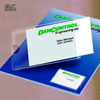Shopping Cart [more]
Your cart is empty.
Index of Products
Information
- 900 Series Chemical Process Control Case Studies
- Automatic Rinse Tank Controls
- Boilers and Cooling Towers
- Circuit Board Cleanliness Testing
- Deionized Water
- Environmental Applications
- Fountain Solutions
- Frequently Asked Questions
- Glossary of Terms
- Hemodialysis
- Horticulture
- Hydroponics
- Material Safety Data Sheets
- Operation Manuals / Instructions
- Oxidation Reduction Potential/Redox
- Pool and Spa
- Product Data Sheets
- Reverse Osmosis
- Textiles
Frequently Asked Questions
Copyright © 2025 GWJ Co. All rights reserved.
Other products and companies referred to herein are trademarks or registered trademarks of their respective companies.
**Prices, images and specifications subject to change without notice.**


For your convenience, we accept these credit cards:

Other products and companies referred to herein are trademarks or registered trademarks of their respective companies.
**Prices, images and specifications subject to change without notice.**


For your convenience, we accept these credit cards:











